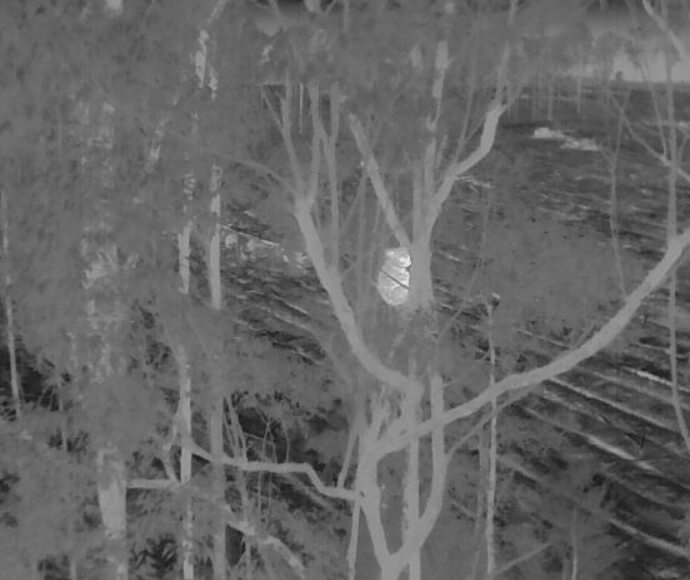Koala populations are in decline across New South Wales and are projected to continue shrinking. The species is now listed as endangered.
To help protect this iconic animal we need to know how many koalas there are and where they are.
The challenge
Perched high in tall trees, koalas don’t exactly make themselves easy to see. They’re quiet and usually asleep. This makes it a challenge for researchers who study koala diseases and declining populations to even find their subjects.
In 2019, researchers in the field would spend hours trying to locate koalas by looking for their scats (droppings). Dr Adam Roff, one of our senior research scientists, decided there had to be a better way.

Knowing drones had been used to find people lost in bushland, we bought a professional grade 7 kilogram drone and immediately saw the advantages. The drone:
- flew in grid patterns over forests
- used a combination of thermal infrared and colour cameras
- flew at 30 kilometres/hour and covered up to 200 hectares a night
- easily located many more koalas than the ground crews did.
As off-the-shelf drones improved the team added 15 drones to the fleet. They then worked with partners to obtain another 30 drones with better features, such as colour and thermal cameras, spotlights, and the ability to fly in rain and high winds.
The koala-seeking drones have been a huge success and have been used in more than 800 surveys covering more than 50,000 hectares in New South Wales.
'We just routinely find twice as many koalas,' Dr Roff said. 'It’s an order of magnitude leap in efficiency.'
Dr Roff and his team have developed a drone-pilot training program and 45 ecologists are now qualified to use the technology. Artificial intelligence engineers have also helped train the drones to distinguish between the heat signal of a koala and ground species such as wombats.
'We’ve been able to get ahead of the game in how the data is collected and analysed,” Dr Roff said. “By the time the drone lands, we already have all the data about which species have been detected.'
Multiple partners using the technology across the state say it has saved them huge amounts of time, effort and money in the field. This includes university researchers, government agencies, non-government organisations and private landholders who have requested surveys.
The University of Sydney’s Professor Mark Krockenberger studies koala diseases such as chlamydia and says the drones have particularly helped in the Southern Highlands, where koalas are quite sparse.
'It’s very difficult country to traverse – it’s hilly and rough – so drones have become really important,' he said.
'I was really impressed with the team that helped us. They did a great job in being able to solve our problem – finding enough animals in a relatively short period of time. Field time is expensive, and finding the koalas is only the first step, so to be able to do that quickly and effectively makes a big difference.'
We plan to use the expertise our scientists have developed to advise on the use of artificial intelligence throughout the department.
The technology is likely to be used in many different areas of wildlife biology. For example, in the drone work, a new fixed-wing capability is in development. These drones can fly higher, faster and usually for longer than rotary wing drones, and will be used to count larger animals such as deer, horses and kangaroos.